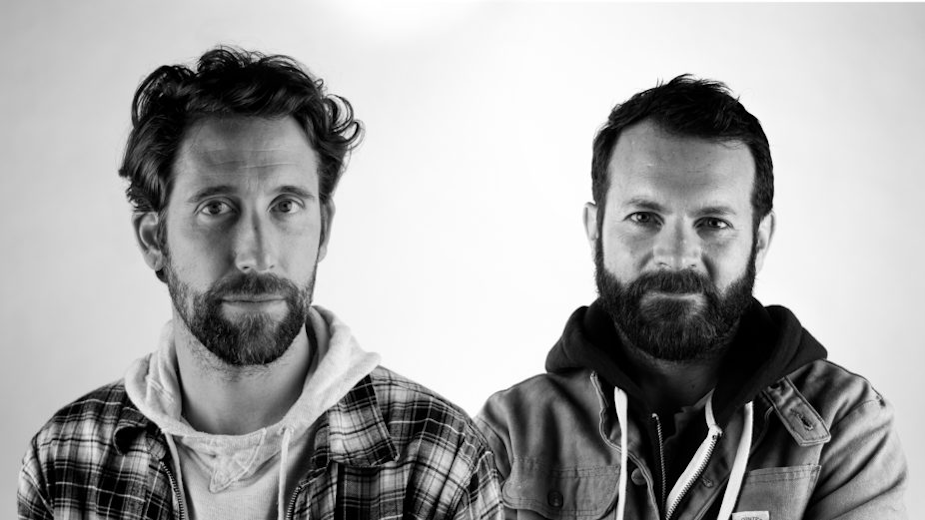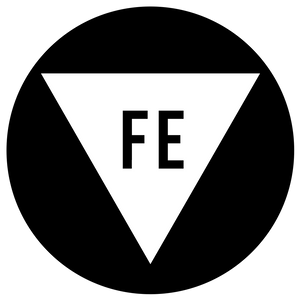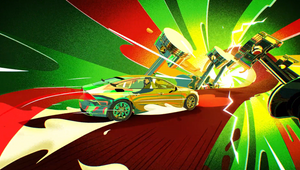
The Directors: Scholar

Launched in 2010 in Los Angeles, Scholar is the brainchild of award-winning visionary directors/partners William Campbell and Will Johnson. A full-service studio with offices in Los Angeles and New York, fuelled by a diverse array of award-winning creators, SCHOLAR produces work that is driven by substance and elevated by style.
Since launching, SCHOLAR’S award-winning success has brushed shoulders with globally recognised, high profile brands. Recent collaborations include far-reaching marketing campaigns for Audi, Beats by Dre, Facebook, Google, Porsche, Samsung, and Timberland. Their well-documented love for design constantly attracts a steady flow of emerging talents, and their endless curiosity and passion for engaging viewers on an emotional level has garnered a slew of coveted awards including multiple gold Cannes lions, a D&AD wood pencil, Gold in Animation Craft at The One Show, and multiple works in the permanent collection at MoMA.
Name: Will Johnson & William Campbell
Location: Los Angeles & New York
Repped by/in: Friends Electric UK & Netherlands
Awards: All of them.
What elements of a script sets one apart from the other and what sort of scripts get you excited to shoot them?
Whenever there is a sense of magic in a script. The magic we love isn’t necessarily an aesthetic device just for style and splash, it’s an emotional catalyst that drives the narrative forward. So if a scene transforms or a world builds, we love knowing why, rather than how. Or what drives the choice to implement the style into our narrative. Really, it’s about how the design is used to elaborate the script.
How do you approach creating a treatment for a spot?
For us it’s about using the strengths of our team. Exploring pacing and aesthetic, words and concepts, looks and feels as we find techniques to pair with all of that. We aren’t necessarily linear thinkers, we love to unpack all of the details, and as we put it back together we toss away the nuts and bolts that may not be necessary for the final build. We always try to tell a story in our treatments, even if our story is about how we’ll tell the story.
If the script is for a brand that you're not familiar with/ don’t have a big affinity with or a market you're new to, how important is it for you to do research and understand that strategic and contextual side of the ad? If it’s important to you, how do you do it?
We definitely dive into who the brand is, what have they done, what has been successful and what resonates within the market that they exist within. It’s important not just from the brand side, but as artists and creatives we want to know how far we can push them outside of their comfort zone. If we go into another dimension that doesn’t relate than we’re doing a disservice to ourselves and the brand. A lot of times it’s through reference pulls, styleguides, background checks (ie internet searches) and Instagram (yes THAT Instagram) to get a good take on who they are and where they came from as well as what the demographic is that loves them.
For you, what is the most important working relationship for a director to have with another person in making an ad? And why?
We are unique in that we work in a bit of a dual-pronged approach. We don’t want to go so far as saying that we’re introverts and extroverts, but we definitely take on both roles and understand we’re working with creatives who balance that as well. It’s important to us that our collaborators are exactly that. Collaborators. We love crafting ideas and concepts together and feel strongest when we combine the introverted thought process, the ‘why’ and ‘how’ with the extroverted ‘what’ and ‘when.’ It’s all communication at the end of the day and that flexibility to understand one another’s thought processes and how we all create is very important to us.
What type of work are you most passionate about - is there a particular genre or subject matter or style you are most drawn to?
Storytelling. We dive so deep into different mediums and it took us a long time to solve this for ourselves. What unites illustration, live-action, full CG and design? A good story. So we surrounded ourselves with amazing artists across every medium to help us pull the best story out of every brand.
What misconception about you or your work do you most often encounter and why is it wrong?
That because we can do it all that we are a cheaper option or that we aren’t specialists. Mostly this stems from us pushing new techniques to discover how to tell stories for brands better in the future. We’ve been on week long cross-national shoots, we’ve told stories with fully animated CG characters that made us cry, and we’ve flexed our design muscles alongside Blackalicious to illustrate the amazingly wacky world of sports. All of this and some. None of it is cheap. We use these differing techniques to suit the story. And it’s the idea that we do it all in house with our team of specialists that allows everything to be so cohesive and collaborative.
Have you ever worked with a cost consultant and if so how have your experiences been?
Oh yea. It happens a lot and generally it never hurts to have checks and balances across any industry. We are definitely the specialists in what we do and it’s at its best when everyone allows a bit of flexibility to be creative. ;-)
What’s the craziest problem you’ve come across in the course of a production – and how did you solve it?
Lately the aspect ration conversions are top of mind. So, we decided to start those conversations WAY earlier to cut that off at the pass. Not to mention most everything these days has a social component, ie is created 2K 16x9, 1x1, 9x16, HD, SD, Print, you name it. So our goal is to not lose any quality while keeping it flexible for deliveries. A lot of this comes down to our amazing leads and production for knowing their sh*t.
How do you strike the balance between being open/collaborative with the agency and brand client while also protecting the idea?
Everyone wants to make something cool, right? Otherwise what are we doing here? Even if the logo needs to be BIGGER, or we spend more time on an endcard, that is cool to someone. So for us, it’s important to find out early what it is that makes everyone excited. What is the spot REALLY about and from there we focus on making that thing cool and allowing the rest of the world to be built from there. Like we mentioned before, we find the best way to communicate too. Not all clients are the same just like not all brands or agencies or people are the same, so we tailor our approach to these conversations differently, whether it’s how we present, the techniques we choose or the flexibility in conversations on set.
What are your thoughts on opening up the production world to a more diverse pool of talent? Are you open to mentoring and apprenticeships on set?
We love it. So much. The idea that we have access to people and place that we wouldn’t have had access to before is amazing. It makes it easier to get inspired when we are seeing things outside of our normal periphery, and to us this push for more diversity, more voices, more inclusion in our industry is a long time coming. We’re always open to new and talented voices and pride ourselves in the amazingly talented folks who have grown up with us at SCHOLAR.
How do you feel the pandemic is going to influence the way you work into the longer term? Have you picked up new habits that you feel will stick around for a long time?
The effects are going to last awhile. We’re hoping we take the good habits with us and leave the anxiety and neuroses behind. Really though, everyone has become much more self-sufficient and self-driven. It’s that idea that no one can see you so how far do you NEED to go, and our team has gone above and beyond. The organisation and project management systems we’ve put in place, the ability that remote artists and teams aren’t scary anymore and that there are ways to possibly structure a space that is collaborative and inclusive with people from all over the world is pretty damn exciting.
Your work is now presented in so many different formats - to what extent do you keep each in mind while you're working (and, equally, to what degree is it possible to do so)?
Definitely touched on that above, but it’s always on our minds. One of the first questions we ask now, right behind ‘how’s everyone feeling?’
What’s your relationship with new technology and, if at all, how do you incorporate future-facing tech into your work?
It’s a love/love relationship. We’re tech nerds at heart and our team loves to explore new and inventive ways to do what we do on a daily basis. If we can change things and make it 2% better why wouldn’t you? From remote-shoots on huge stages across the world, to collaborating with other studios, to programs to see ideas all at once in a huge meeting and finding way to scale the company without losing sight of what makes us strong. We’re ready for whatever new set of goggles the future throws at us.
Which pieces of work do you feel really show off what you do best – and why?
Bleacher Report
Timberland 'Legends Club'










